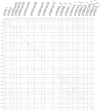Prophage-like elements present in Mycobacterium genomes
- PMID: 24673856
- PMCID: PMC3986857
- DOI: 10.1186/1471-2164-15-243
Prophage-like elements present in Mycobacterium genomes
Abstract
Background: Prophages, integral components of many bacterial genomes, play significant roles in cognate host bacteria, such as virulence, toxin biosynthesis and secretion, fitness cost, genomic variations, and evolution. Many prophages and prophage-like elements present in sequenced bacterial genomes, such as Bifidobacteria, Lactococcus and Streptococcus, have been described. However, information for the prophage of Mycobacterium remains poorly defined.
Results: In this study, based on the search of the complete genome database from GenBank, the Whole Genome Shotgun (WGS) databases, and some published literatures, thirty-three prophages were described in detail. Eleven of them were full-length prophages, and others were prophage-like elements. Eleven prophages were firstly revealed. They were phiMAV_1, phiMAV_2, phiMmcs_1, phiMmcs_2, phiMkms_1, phiMkms_2, phiBN42_1, phiBN44_1, phiMCAN_1, phiMycsm_1, and phiW7S_1. Their genomes and gene contents were firstly analyzed. Furthermore, comparative genomics analyses among mycobacterioprophages showed that full-length prophage phi172_2 belonged to mycobacteriophage Cluster A and the phiMmcs_1, phiMkms_1, phiBN44_1, and phiMCAN_1 shared high homology and could be classified into one group.
Conclusions: To our knowledge, this is the first systematic characterization of mycobacterioprophages, their genomic organization and phylogeny. This information will afford more understanding of the biology of Mycobacterium.
Figures





References
Publication types
MeSH terms
LinkOut - more resources
Full Text Sources
Other Literature Sources

